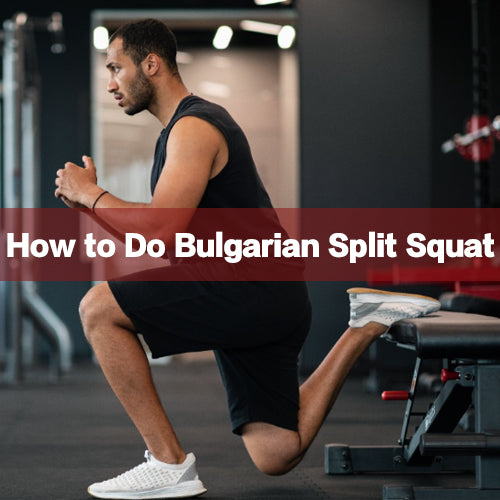
Many focus on major muscle groups like the chest, back, and legs when building a strong physique. However, neglecting smaller muscles can cause imbalances and limit overall strength.
The wrist curl, a targeted forearm exercise, plays a pivotal role in not only strengthening the forearms but also enhancing grip strength – a crucial aspect in many athletic and everyday activities. In this comprehensive guide, we'll delve into the intricacies of wrist curls, their variations, benefits, and tips for optimal performance.
The Anatomy of Forearm Power: Wrist Curls Muscles Worked
To truly appreciate the wrist curl, it's essential to understand the complex musculature of the forearms. Your forearms consist of numerous muscles divided into two main groups:

Flexor Group (Anterior Forearm):
- Flexor Carpi Radialis
- Flexor Carpi Ulnaris
- Palmaris Longus
- Flexor Digitorum Superficialis
- Flexor Digitorum Profundus
These muscles are primarily responsible for flexing the wrist (curling it towards your body) and are the main targets of wrist curls.
Extensor Group (Posterior Forearm):
- Extensor Carpi Radialis Longus
- Extensor Carpi Radialis Brevis
- Extensor Carpi Ulnaris
- Extensor Digitorum
- Extensor Indicis

These muscles extend the wrist (curling it away from your body) and are worked during reverse wrist curls.
The beauty of the wrist curl lies in its ability to isolate and overload the often-neglected flexor group. By focusing on wrist flexion under resistance, you're able to maximally stimulate these muscles, leading to significant hypertrophy and strength gains.
Moreover, the wrist curl engages your grip muscles (extrinsic hand muscles) isometrically as you hold the weight. This dual action makes the wrist curl a powerhouse move for building both wrist strength and crushing grip power.
How to Do Wrist Curl: A Step-by-Step Guide
Seated Wrist Curl
Equipment Setup: You'll need a dumbbell for this exercise. Begin by sitting on a weight bench with your forearm resting on your thigh. Your wrist should extend just beyond your knee. Hold the dumbbell with an underhand grip, palms facing up.
Wrist Flexion (Palms Up): Start by allowing the dumbbell to roll down to your fingertips. Slowly curl your wrist upward, raising the dumbbell as high as comfortably possible. Ensure your forearm remains stationary throughout the movement. Exhale as you curl up.
Peak Contraction: Hold the peak contracted position for a brief moment to intensify the muscle engagement. Focus on feeling the tension in your forearm muscles.
Wrist Extension (Palms Down): For the wrist extension variation, turn your hand so your palms face down. Allow the dumbbell to roll up toward your palm. Slowly lower the dumbbell back to the starting position while inhaling.
Repetitions and Sets: Aim for around 3 sets of 10 to 15 repetitions per set. Adjust the weight based on your comfort level and gradually increase as you get stronger.
Standing Wrist Curl
Starting Position: Stand with your feet shoulder-width apart, holding a barbell or dumbbells with an underhand grip.
Support Your Arms: Rest your forearms on a bench or any stable surface at waist height, allowing your wrists to hang over the edge.Perform the Curl: Similar to the seated wrist curl, curl your wrists upward, lifting the weight while keeping your forearms stationary.
Lower with Control: Slowly lower the weight back to the starting position, ensuring a full range of motion.
Repeat: Complete the desired number of repetitions with consistent form.
Tips for Proper Form
- Keep your movements slow and controlled to maximize muscle engagement.
- Avoid using your upper arms or shoulders to lift the weights.
- Focus on a full range of motion to fully engage the forearm muscles.
- Start with a lighter weight and gradually increase as your strength improves.
4 Wrist Curl Variations
1.Reverse Wrist Curls

- Hold a dumbbell with an overhand grip.
- Rest your forearm on a bench or your thigh, allowing your wrist to extend off the edge.
- Perform reverse wrist curls by curling your wrist downward and then raising it back up.
2.Wrist Roller

- Attach a rope to a weight and then attach the rope to rack attachment or rod.
- Hold the stick with both hands and roll the weight up by rotating the stick with your wrists.
- Roll the weight back down to complete the rep.
3.Plate Pinch

- Hold two weight plates, smooth side out, between your thumb and fingers.
- Lift the plates by pinching them together and hold for a certain duration.
- This exercise is excellent for developing pinch grip strength.
4.Barbell Finger Curls

- Similar to wrist curls, but you'll be gripping the barbell using only your fingers.
- Rest your forearms on a bench or your thighs, and allow your fingers to hang off the edge.
- Curl your fingers upward, flexing at the knuckles, and then lower them down.
5.Behind the Back Wrist Curls

- Stand with feet shoulder-width apart.
- Hold a barbell behind your back with an overhand grip.
- Let the barbell roll to your fingers.
- Curl your wrists upward.
- Lower the barbell back down.
6.Cable Wrist Curls

- Bend your wrists upward as you exhale. Do this slowly to engage the forearm and prevent the weight from straining the wrist.
- Extend your wrists down until they can breathe in comfortably.
- Return your wrist to a neutral position.
Read More: 10 cable workouts for bigger arm
By incorporating these variations into your forearm training routine, you can target different muscle groups and angles, leading to a more well-rounded forearm development. Remember to start with lighter weights and gradually increase the intensity as your strength improves.
Common Mistakes and How to Avoid Them
To get the most out of your wrist curls and avoid injury, be mindful of these common mistakes:
- Using Too Much Weight: Lifting weights that are too heavy can lead to poor form and increase the risk of injury. Start with a manageable weight and increase gradually.
- Rushed Movements: Performing the exercise too quickly can reduce its effectiveness and strain your muscles. Focus on slow, controlled movements.
- Limited Range of Motion: Not fully extending or curling your wrists limits muscle engagement. Ensure you use a full range of motion for maximum benefit.
- Engaging Upper Arms: Using your upper arms to lift the weight reduces the focus on your forearms. Keep your forearms stationary and isolate the wrist movement.
- Inconsistent Form: Maintaining consistent form is crucial for balanced muscle development. Pay attention to your technique throughout the exercise.
Benefits of Wrist Curls
Enhanced Grip Strength
Grip strength is crucial in various sports and daily activities. Wrist curls significantly improve grip strength, making tasks like lifting weights, carrying groceries, and even opening jars easier.
Injury Prevention
Strong forearms contribute to better wrist stability, reducing the risk of injuries during activities that stress the wrists, such as typing, playing instruments, or even yoga.
Functional Fitness
The strength gained from wrist curls transfers to practical tasks like manual labor, sports, and fitness routines, enhancing overall functionality.
Balanced Development
Incorporating wrist curls into your routine ensures balanced muscle development. Neglecting forearm muscles can lead to imbalances and potential injuries, especially if you engage in heavy lifting.
Tips for Effective Forearm Training
Warm Up: Before starting your wrist curl routine, it's essential to warm up your wrists and forearms. Perform some light wrist rotations and gentle stretches to prepare the muscles for the upcoming workout.

Focus on Form: Proper form is crucial to prevent injury and ensure effective muscle engagement. Keep your forearm stationary throughout the movement and avoid using momentum to lift the weight.
Mind-Muscle Connection: Concentrate on feeling the contraction in your forearm muscles as you perform each rep. Visualize the muscles working and focus on creating tension during the exercise.
Progressive Overload: To continue seeing progress, gradually increase the weight you're using. However, prioritize proper form over heavy weights, especially when you're just starting.
Include Rest Days: Like any other muscle group, your forearms need time to recover. Include rest days in your training routine to allow for proper recuperation.
Balanced Training: While wrist curls target the flexor muscles, it's essential to include exercises that work the extensor muscles as well. This balanced approach ensures overall forearm development.
Listen to Your Body: If you experience pain or discomfort while performing wrist curls, stop immediately. Consult a fitness professional or healthcare provider if you're unsure about your form or if you have any pre-existing conditions.
Incorporating Wrist Curls into Your Routine
Wrist curls can be integrated into various workout routines depending on your goals. Here are some ideas:
- Upper Body Workout: Include wrist curls in your upper body routine along with exercises like bicep curls, tricep extensions, and shoulder presses.
- Forearm Focus: Dedicate a session to forearm training, combining wrist curls with other forearm exercises like reverse curls, hammer curls, and farmer’s walks.
- Full-Body Workout: Add wrist curls to a full-body workout to ensure your forearms get adequate attention.
- Grip Strength Training: Combine wrist curls with other grip-strengthening exercises like deadlifts, pull-ups, and plate pinches.
Final Thoughts
Wrist curls could be considered as a minor accessory exercise in the context of strength training. However, they are the means of opening up new opportunities for increasing functionality, aesthetics and performance.
The unsung heroes of the weight room, wrist curls help you to have a stronger grip when lifting heavy deadlifts as well as prevent pain on your elbow joint during pressing movements. They are those forearms that have become so prominent among strength athletes.
Nevertheless, their advantages go beyond just working out at the gym. Through wrist curls, everyday life, sport and even intricate manual skills can gain power and supervision. They show that no muscle is too small to be counted in fitness.
So remember this next time you’ll want to skip forearm work: those extra few sets of wrist curls could be what is needed to make another spurt rather than stagnate; it may mean escaping persistent elbow pain while doing presses or maybe its another training day but you are building some awesome functional bodybuilding physique.


